Cover photo by Desiré Darling.
Find this species in the FBIS database (Freshwater Biodiversity Information System) here.
Family Libellulidae
Identification

Near Hluhluwe, KwaZulu-Natal
Photo by Ryan Tippett
Small size
Hind wing – 25mm.
The Slender Pintail is easily recognised as an Acisoma species by the swollen abdomen base that tapers off sharply from segment 6 down to the tip. It is most similar to the Stout Pintail (Acisoma inflatum). The two species bear a close resemblance to one another and co-occur at many sites.
The most conclusive way to separate the two is in the hand, by examining the male’s secondary genitalia. However, the colouration differences on the S4 ventral corner, along the sides of the abdomen are also helpful. In Acisoma variegatum the ventral corner is mostly white. This same area is edged with black in Acisoma inflatum. Additionally, the S5 lateral carina is partly white in Acisoma variegatum and all-black in Acisoma inflatum. The Slender Pintail also has segments 6 and 7 of equal length, while in the Stout Pintail, segment 6 is shorter than segment 7.
Furthermore, Acisoma variegatum tends to be a little larger and somewhat brighter in colour, with less of the yellowish-brown wash on the thorax.
Click here for more details on identification.
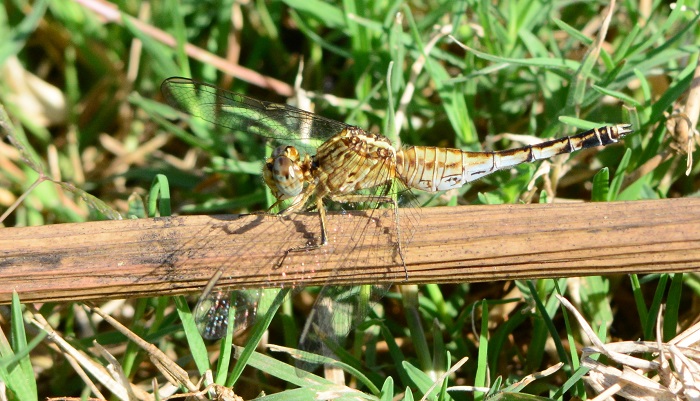
Muzi Pan, KwaZulu-Natal
Photo by Ryan Tippett
Habitat
The Slender Pintail inhabits the shallow, standing waters of marshes, pans, floodplains, and slow-moving rivers. It occupies both permanent and seasonal wetlands, preferring sites rich in sedge, grasses, and various types of floating and emergent vegetation.
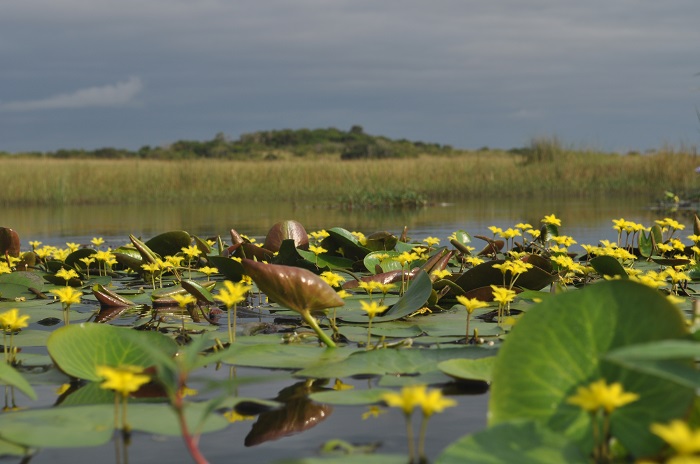
Kosi Bay, iSimangaliso Wetland Park, KwaZulu-Natal
Photo by Ryan Tippett
Behaviour
The Slender Pintail typically sits close to the water on floating or emergent plant stems. It hunts from a perch and quickly resettles again. The Slender Pintail has a fast wasp-like flight.
The Slender Pintail is on the wing from mostly from August to May (see Phenology below).
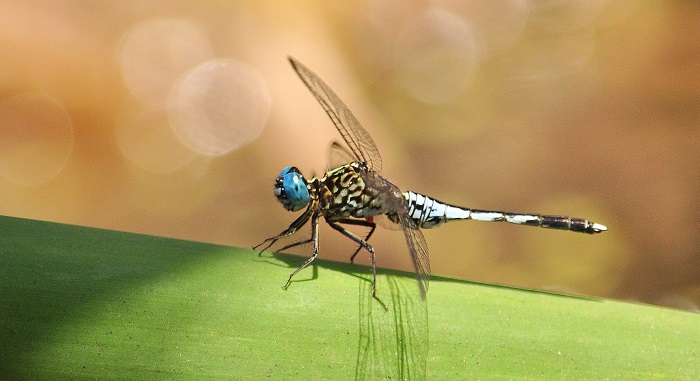
Near Hluhluwe, KwaZulu-Natal
Photo by Ryan Tippett
Status and Conservation
The Slender Pintail is locally common in South Africa. It is listed as of Least Concern in the IUCN Red List of Threatened Species. Slender Pintails are most common in natural habitats but will make use of suitable man-made sites such as dams and ponds.

Near Hluhluwe, KwaZulu-Natal
Photo by Ryan Tippett
Distribution
The Slender Pintail is widespread in eastern and southern Africa, extending from Ethiopia in the north down to South Africa. Its South African distribution is centred around the hot savanna regions and its range extends along the coastal plain to the Eastern Cape border.
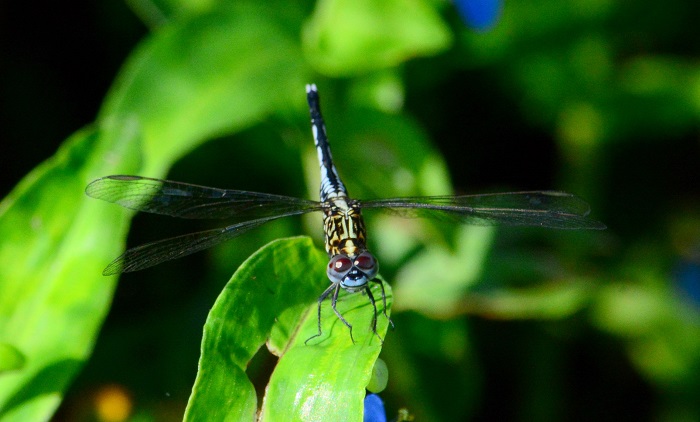
Near Hluhluwe, KwaZulu-Natal
Photo by Ryan Tippett
Below is a map showing the distribution of records for Slender Pintail in the OdonataMAP database as at February 2020.

Below is a map showing the distribution of records for Slender Pintail in the OdonataMAP database as of December 2024.

The next map below is an imputed map, produced by an interpolation algorithm, which attempts to generate a full distribution map from the partial information in the map above. This map will be improved by the submission of records to the OdonataMAP section of the Virtual Museum.


Ultimately, we will produce a series of maps for all the odonata species in the region. The current algorithm is a new algorithm. The objective is mainly to produce “smoothed” maps that could go into a field guide for odonata. This basic version of the algorithm (as mapped above) does not make use of “explanatory variables” (e.g. altitude, terrain roughness, presence of freshwater — we will be producing maps that take these variables into account soon). Currently, it only makes use of the OdonataMAP records for the species being mapped, as well as all the other records of all other species. The basic maps are “optimistic” and will generally show ranges to be larger than what they probably are.
These maps use the data in the OdonataMAP section of the Virtual Museum, and also the database assembled by the previous JRS funded project, which was led by Professor Michael Samways and Dr KD Dijkstra.
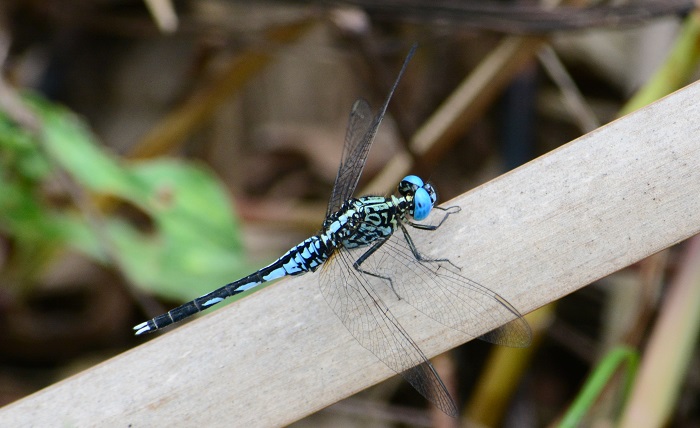
Near Hluhluwe, KwaZulu-Natal
Photo by Ryan Tippett
Phenology



Kosi Bay, iSimangaliso Wetland Park, KwaZulu-Natal
Photo by Ryan Tippett
Further Resources
The use of photographs by Desiré Darling is acknowledged. All other photos by Ryan Tippett.
Slender Pintail Acisoma variegatum Kirby, 1898
Other common names: Grizzled Pintail (Alt. English); Dunpylstertjie (Afrikaans)
Recommended citation format: Loftie-Eaton M; Navarro R; Tippett RM; Underhill L. 2025. Slender Pintail Acisoma variegatum. Biodiversity and Development Institute. Available online at https://thebdi.org/2020/06/12/slender-pintailacisoma-variegatum/
References: Tarboton, M; Tarboton, W. (2019). A Guide to the Dragonflies & Damselflies of South Africa. Struik Nature.
Samways, MJ. (2008). Dragonflies and Damselflies of South Africa. Pensoft
Samways, MJ. (2016). Manual of Freshwater Assessment for South Africa: Dragonfly Biotic Index. Suricata 2. South African National Biodiversity Institute, Pretoria
Martens, A; Suhling, F. (2007). Dragonflies and Damselflies of Namibia. Gamsberg Macmillan.
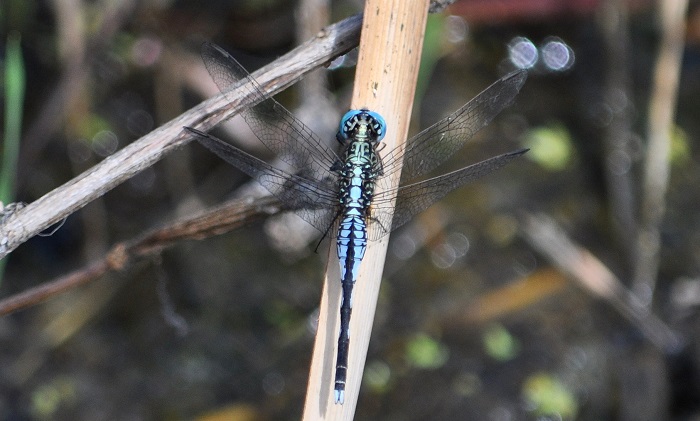
Near Hluhluwe, KwaZulu-Natal
Photo by Ryan Tippett

